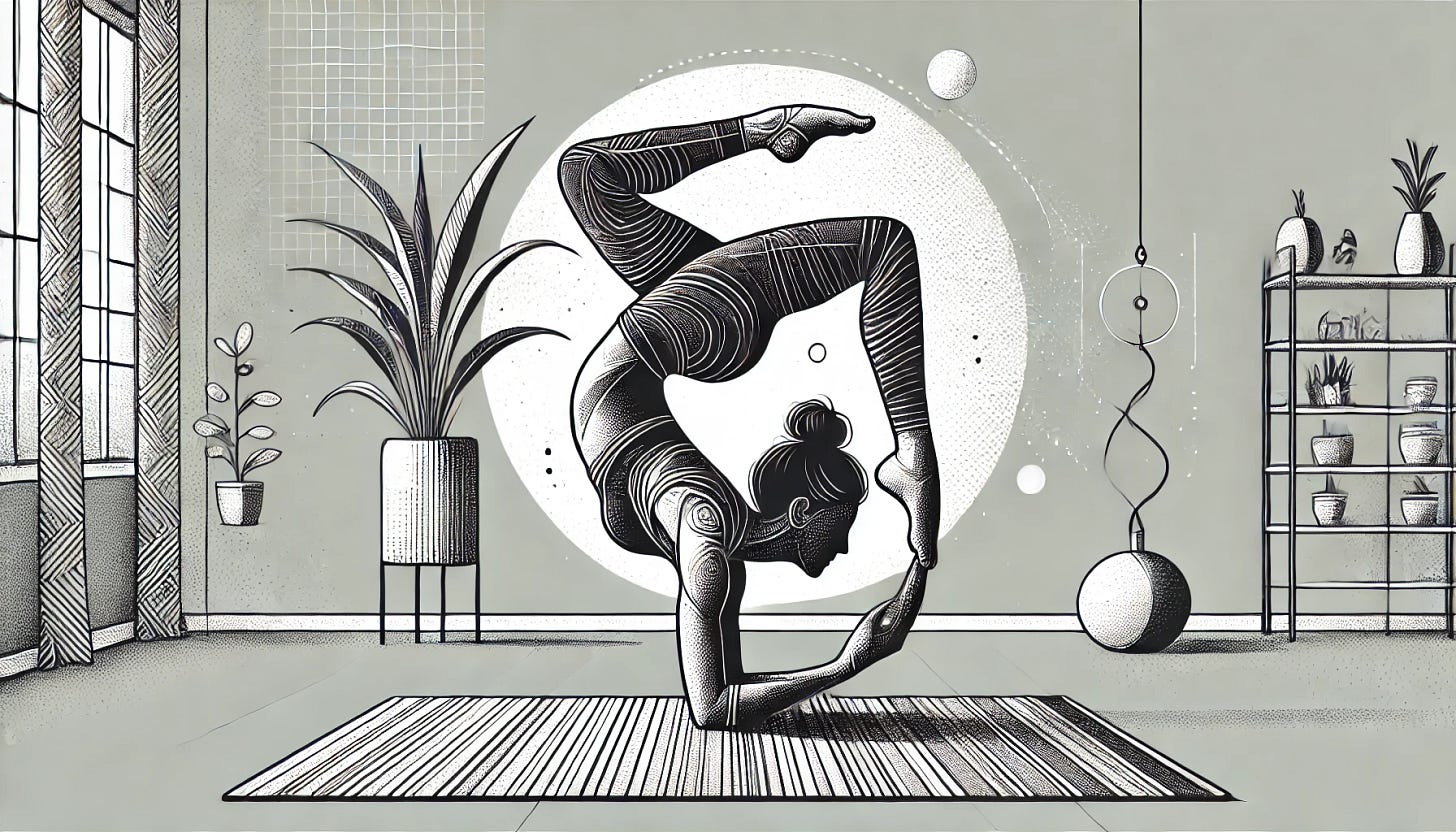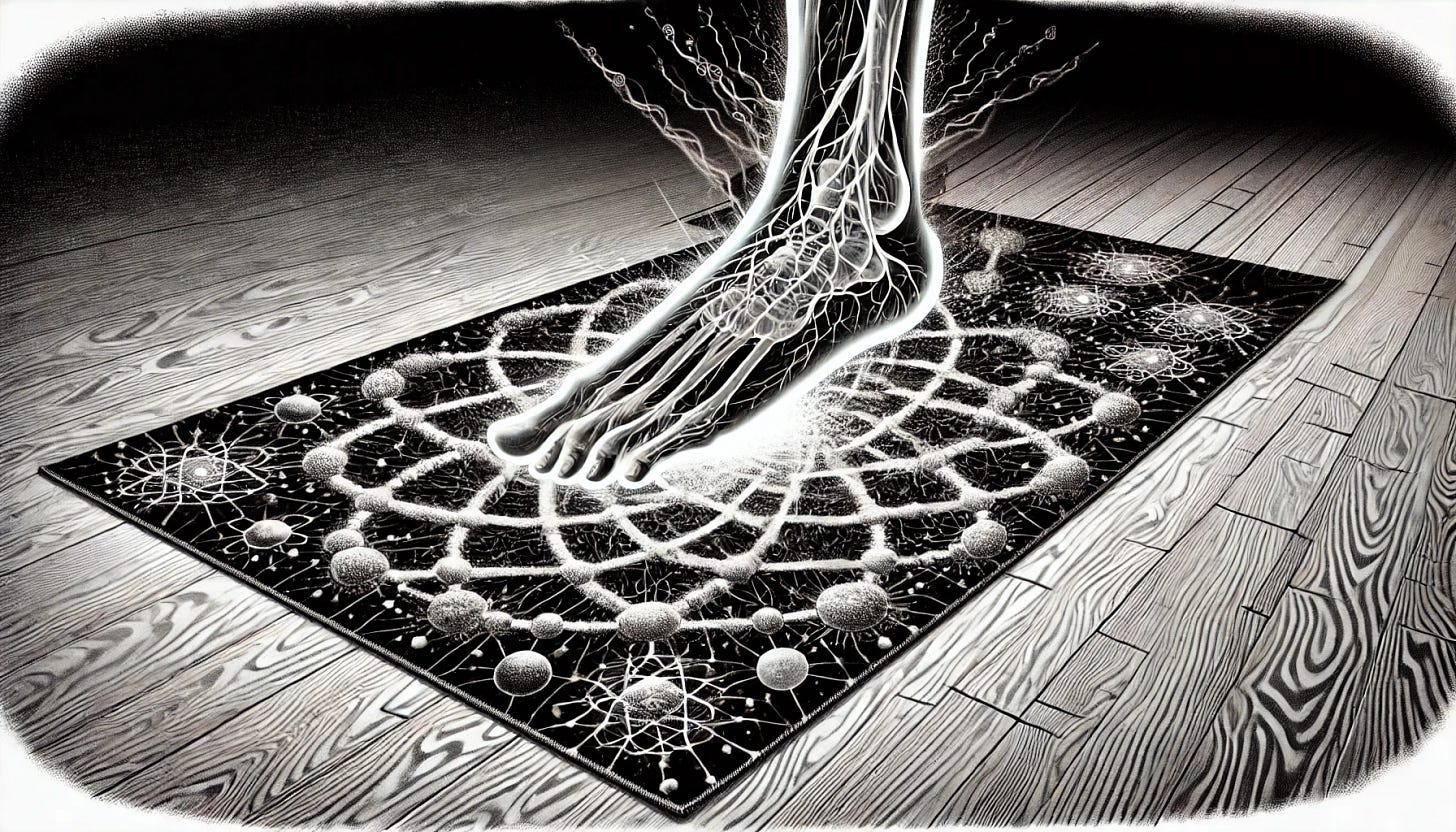Right Knowledge
Sutra 6: Pramāṇa Viparyaya Vikalpa Nidrā Smṛtayaḥ — right knowledge, misconception, imagination, sleep and memory.
Sutra 6: Pramāṇa Viparyaya Vikalpa Nidrā Smṛtayaḥ — correct knowledge, misconception, imagination, sleep and memory.
These are the five forms of vrittis (thought/mental modifications) that Patanjali tees up in Sutra 5. Last week I focused on the overarching dichotomy he draws between all forms of thought — painful/selfish vs. painless/selfless.
The first of these five, “right knowledge”, is laid out in the 7th sutra.
Sutra 7: Pratyakṣānumānāgamāḥ pramāṇāni — Direct perception (pratyaksha), inference (anumana), and reliable testimony (agama) are the sources of correct knowledge (pramana).
This beautifully concise sutra is, in a nutshell, why I think yoga is (at least as I’ve learned it) worth championing as a way of being — especially in the modern era.
Calling this current time period of human history the information age is probably the best way to characterize the unique aspects of experience that we have, as compared to humans who lived in the years before the mid-1900s. The proliferation of the internet (and widespread access to it even in the most remote regions of the planet) has created an unprecedented level of availability to quality information for human brains.
However, the baseline capacity for interpreting that information has stayed relatively the same.
1️⃣ We have what we perceive firsthand (information that is conveyed to our brain by the senses)
I see a large black and white mammal
I hear a “moo” sound
I smell farts
2️⃣ We have what we can infer from those observations
The black and white mammals of this kind I’ve seen before expelled a white liquid from their underbelly, so this one probably does too
People drank it and seemed to enjoy it, so if I drink it, I probably will too
3️⃣ And we have what we can choose to believe from what others tell us about their firsthand experience and inferences
These things are called “dairy cows”
The one I’m seeing has been raised humanely and fed organic grass
If I pull on one of the pink dangling things in the morning, milk will come out
If I drink the milk, I will have big strong muscles and Beyonce will look at me like this ↙️
Seriously though…what a weird ass ad campaign 🤣
Holding all of those things equal, you could assume that Patanjali’s right knowledge is a lot easier to come by during this “information age” since agama, reliable testimony, is much easier to come by via internet.
Previously (think like, middle ages) all a given human had to work with in terms of understanding how the world worked (why their crops died, why their kid got sick, why the King declared war) was what they could directly perceive, what they could infer about those perceptions, and what literate people decided to tell them verbally from what they had read in scribed forms of reliable testimony from other literate people.
They might very well figure out that the reason the crops died and the kids got sick was because both had been given water from the same poisoned well, a safe inference made from noticing that neighbors (who use a different well) hadn’t experienced the same calamities.
The degree of certainty in that conclusion obviously is still suspect, of course. But the true problem is that even with knowledge of the cause, finding the best solution requires understanding.
In other words, knowing that the well is poison just implies the conclusion “don’t drink that water”. It doesn’t imply “dig another one here vs. there” or “the reason the water was poison is that the King’s castle started to dump its sewage nearby”.
These are layers to understanding that, ultimately, we always have to rely on some form of reliable testimony to comprehend. Individually, we could spend a lifetime inventing a microscope, then another lifetime studying microbes, then another politics, and another…you get the point.
Third degree information isn’t really the problem here. It’s what happens when third degree information is all we think about.
The problem seems to be that we’ve become incapable of distinguishing between direct experience, inference, and reliable testimony.
Truly, they’ve all sort of blended together into this current form of composite digital experience that (most of us) are living in. Put bluntly, I think the Information Age paired with Big Tech companies’ mastery of dopamine manipulation (to keep our minds constantly engaged with the third-degree forms of information that populate their apps, amidst advertisements) has created a layer of distraction and obsfucation in our collective consciousness.
We don’t even see what’s right in front of us anymore because our direct experience is hidden behind this layer.
I’m talking about the never ending stream of thoughts, feelings, urges, and notions that surge through our neural networks every time we glance at a screen (or any form of modern stimulation) during the day. It truly seems that once that stream has reached a certain pace, simply looking away isn’t enough to stop it. If you’ve ever tried to do a digital detox up in the mountains and found yourself deeply relieved to check your email at the end, you know personally what I’m providing (somewhat reliable) testimony to here.
Call it a coincidence, call it a calcified pineal gland, call it idiocracy, call it Chinese psy-ops to degrade our youth…call it whatever you want. The bottom line is that each of us is individually responsible for shedding that layer of misapprehension from our conscious experience.
If that hasn’t happened, how could you possibly be capable of correctly diagnosing the nature of the grander issue? Can you see everyone’s pineal gland? Do you know the thoughts of every politician in DC? Have you called up Xi Jinping and chatted about his plans for world domination lately?
When we begin conflating testimony with direct experience, that’s when dogmatic thinking seems to arise.
The symptoms of dogmatic thinking are somewhat subtle in today’s world, since we all have at least an oblique awareness of the scientific method and the idea that we need good sources for our conclusions. It’s common to hide a lack of true understanding behind links, quotes, and citations — or just to simply never put yourself out there for fear of being whacked in the wildly chaotic world of internet (and real life) trolls. Fair enough by my standards.
To see what I mean, picture the people posting on Facebook about how stupid everyone else is for not thinking the same thing they do about vaccines or about Zuckerberg’s new content moderation policies or about the things Trump says. Question them, and you’ll get something like “I believe in science” or “do your own research”. Both of those statements are oxymoronic. Science is a process of slowly discarding reason for doubt by repeated observation of a given subject. You don’t have to believe in it. And unless you’re following that process, then “doing your own research” probably just means reading what research other people have done and drawing conclusions based on (likely) inadequate understanding of the observations they had.
And yet we base major life decisions — what college to attend, what car to buy, what presidential candidate to vote for — almost entirely on third degree information. Which is truly fine, but only so long as we remain capable of evaluating/modifying those choices based on our first hand experience.
This is why yoga is so valuable. It provides us with a format for practicing our ability to return to that direct experience and for improving our ability to engage with it when we “arrive”.
It starts simply with letting the breath inform the movement.
The durations of your inhale and exhale are forms of information that allude to underlying realities in your body (lung capacity, posture, strength of diaphragm). Being able to breathe in a challenging pose basically means you’ve successfully paid close enough attention to your movements to align your skeletal system and strengthen your muscles so as to experience ease despite some contortion of the normal state.
When you aren’t able to breathe naturally, or notice that you aren’t paying attention to the breath and were distracted by one thing or another, you have a choice:
Ignore it, continue engaging with whatever idea you have of the idealized posture (forcing yourself into a pose)
Notice it, back away from the concept, pay attention to the substrate of experience again
Asana is not the only way to practice this process of detaching from the magic act that our thoughts seem to play in front of our eyes.
As I’m sitting here moving my fingers, shapes are appearing on the screen that are made visible by tiny little light bulbs under a piece of glass lighting up in different colors (I think? 🤷 — that’s an inference I’m not sure of, honestly).
As you look at this post, the little light bulbs under whatever screen you have with you now are lighting up, reproducing the same shapes and symbols. Probably hours after I wrote this.
The symbols represent commonly held ideas (language) that more or less conjure similar images and notions in the minds of anyone who perceives them. When you read it, you think some things, maybe feel others, and then it’s over and you might move on to another email.
The thing is that we tend to get quite caught up in that illusion.
How often, when you’re looking at your phone, do you see it for what it is? I’d bet my left arm that 99.99999% of the time we are seeing the ideas it presents to us, not the glass, nickel, and cobalt.
So it is with the body.
When you place your foot forward to take warrior 2, how much do you really experience that act for what it is? There are usually thoughts — “ok it’s about where it normally goes, so when I bend my leg my knee will be aligned over my ankle” or just “ouch my ankle hurts”.
Truly this practice is about dropping back from those composite forms of experience, and learning to perceive the raw data for a while. The foot landing on the ground is an appearance of sensation in the field of awareness that you’re perceiving.
Perhaps that is yet another form of composite thought which I’m attributing to something that’s really indescribable. I likely wouldn’t argue if you made that point.
But I do maintain — at the behest of Patanjali’s reliable testimony, inferences based on observations of other yoga practicioner lives, and my own personal experiences — that doing this work (dropping out of all perceptions and trying to simply experience the body existing in space, as it is, without judgement) is deeply valuable for informing how one moves through the world and forming right knowledge.
It’s the ground layer to forming the opposition to the mindless compliance that characterizes today’s world.
We are working to become mind-FULL.
It’s not about losing your mind or escaping your troubles.
It’s about making the mind sharp, clear, and discerning.
From that space, when you see clearly and can trust your direct perception, all other forms of knowledge can proceed with solid foundation. We’ll never know everything on our own. But if we know for damn sure what we know, then together with other people who know what they know, we can collectively shine the light on sources of imbalance and oppression within the world at large.
Yoga is a radical act in today’s world.
So stay with your breath, rebels.








